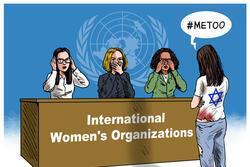Introduction
- If you have done any of the earlier lessons in Unit 3 with your class, remind them of the rifts that developed between blacks and Jews in the Civil Rights Movement in the late 1960s. These rifts led many Jews to feel their involvement in the Civil Rights Movement was resented by blacks or that they had different priorities and needed to leave the Civil Rights Movement.
OR
If you haven't done any of the earlier lessons in Unit 3, provide some general background about the rifts that developed between blacks and Jews in the Civil Rights Movement in the late 1960s. (See the introductory essay from previous lessons in Unit 3 on this topic.) These rifts led many Jews to feel their involvement in the Civil Rights Movement was resented by blacks or that they had different priorities and needed to leave the Civil Rights Movement. - Explain that throughout history, people working for the liberation of one group have started to notice ways in which their own community suffered from oppression and it inspired them to work to liberate themselves (for example, white women working in the antislavery movement in the 19th century). This also happened within the Civil Rights Movement, especially after the rise of Black Power, when African Americans pointed out that they should be leading the movement to liberate themselves, and that whites in the movement should be working on their own issues. Taking that lesson to heart, some white men began to focus on anti-war activism (which affected them in particular through the draft) and some white women began to focus on women's liberation. In addition to these movements, some Jews began to think about their own experiences of cultural oppression and develop ethnic pride and Jewish institutions that would help Jews learn about their own roots. (Other racial and ethnic groups, too, such as Latinos, Asians, and Native Americans, also learned from the example of Black Power and developed movements that focused on building their own power.)


